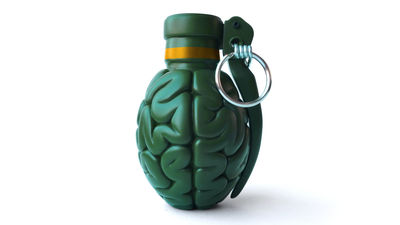A drug that will cure baldness will be developed just by applying it to the scalp

by
Hair loss and baldness, or so-called “baldness”, has always been a problem for men, and ancient Roman politician Julius Caesar was called “bald maiden” and always wore a laurel wreath to hide his thinning hair. It is said that A Korean research team has announced a method to treat such baldness using ' stem cells, ' which have both the ability to self-proliferate and the ability to differentiate into specific cells.
A randomized, double‐blind, vehicle‐controlled clinical study of hair regeneration using adipose‐derived stem cell constituent extract in androgenetic alopecia-Tak--STEM CELLS Translational Medicine-Wiley Online Library
https://stemcellsjournals.onlinelibrary.wiley.com/doi/full/10.1002/sctm.19-0410
New Stem Cell-Based Topical Solution Helps Bald People Regrow Hair
https://scitechdaily.com/new-stem-cell-based-topical-solution-helps-bald-people-regrow-hair/
' Male pattern baldness (AGA)', which is caused by genetic, hormonal, and environmental factors, is a progressive alopecia that is commonly seen in males, with thinning hair and alopecia at the hairline and crown. It looks like AGA is not a life-threatening illness, but it can reduce an individual's self-esteem and mental health. There are several treatments for AGA, but the more effective ones also have side effects such as decreased libido and erectile dysfunction.
The research team led by Dr. Lee Sang-Yeoop of the Institute for Family Medicine and Biomedical Science and Technology at Busan University Yangsan Hospital focused on stem cells for AGA treatment. In particular, human adipose-derived stem cells (ADSC) secrete growth hormone that promotes cell growth and proliferation, and hepatocyte growth factor , vascular endothelial growth factor , and insulin-like growth factor contained therein are hair-producing hair. There are also research reports that increase the size of the capsule during hair growth.
The research team led by Dr. A classified 29 males and 9 females of AGA patients into two groups. One group of patients applied the component extract of ADSE (ADSC-CE) twice daily to the scalp with their fingers. The other, as a control group, applied placebo twice daily to the scalp.
Then, 16 weeks after the start of the experiment, the group to which ADSC-CE was applied showed a significant increase in the number of hairs and the diameter, and no particularly large side effects were observed. In particular, it reported that the average hair density increased by 28.1%.
The following images were taken of the heads of four patients who participated in the experiment. The left two are patients in the ADSC-CE application group, and the right two are in the placebo application group. Also, A is at the beginning of the experiment, B is after 8 weeks, C is after 16 weeks.

The research team also conducted an experiment even after subcutaneous injection of ADSC-CE, and reported that the number of hairs and diameter increased. However, the effect was less than when applied, the research team said, 'the hand stimulation itself has a specific effect on hair growth by helping the blood flow in the applied area.' Argues that
Dr. Lee said, `` Previous studies have shown that ADSCs promote hair growth in both men and women with alopecia, but no placebo-controlled trials were conducted in humans. This study aims to evaluate the efficacy of ADSC-CE in middle-aged AGA patients and hypothesizes that ADSC-CE is an effective and safe treatment. ' 'The next challenge is to confirm the beneficial effects of ADSC-CE on hair growth and to carry out similar studies in a large and diverse population in order to elucidate the mechanism by which ADSC-CE acts.' States.
Related Posts:
in Science, Posted by log1i_yk







